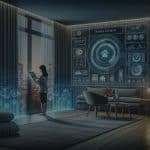Greetings, all you food lovers and culinary enthusiasts out there! Today, we’re focusing on an immensely exciting topic – fusion cuisine. Specifically, we’re diving into the tantalizing world of mixing classic French techniques with local ingredients. One might ask, why French techniques? Well, French cuisine has long been hailed as a benchmark of quality in the culinary world, renowned for its precision and refinement. So, let’s embark on this innovative culinary journey together.
Taking A Closer Look at Classic French Techniques
Before we jump into the integration of local ingredients, let’s first understand the cornerstone of our discussion – classic French cooking techniques. French cooking is characterized by its focus on fresh, high-quality ingredients and meticulous attention to detail. The French have a particular cooking method for every ingredient, and these techniques play a significant role in bringing out the flavors.
Also to see : What’s the Key to a Rich and Flavorful Beef Stew?
Some of the classic techniques include braising, a slow-cooking method that tenderizes and enhances the flavor of the meat; sautéing, a quick frying method that seals in the juices of the food; and flambéing, a dramatic way of caramelizing the food and adding a robust flavor. These techniques, when practiced well, can transform the most ordinary ingredients into culinary masterpieces.
Infusing Local Ingredients into French Techniques
Now let’s delve into the exciting part – the fusion of local ingredients with French techniques. Local ingredients are the backbone of any regional cuisine. They reflect the geography, climate, and culture of a place, and they are as diverse as the planet we live on.
Also to see : How Can You Master the Art of a Simple yet Elegant Omelette?
Take, for example, the American South, characterized by ingredients like corn, tomatoes, and barbecue pork. By applying French techniques to these ingredients, you can create dishes that are both familiar and exotic. Imagine braising barbecue pork with traditional French herbs, or sautéing corn and tomatoes with a classic French mirepoix. The possibilities are endless, and such fusion creates a unique dining experience, familiar yet novel.
Experimenting and Innovating with Fusion Cuisine
Fusion cuisine is not a neat science; it’s an art that encourages creativity and experimentation. This is where you get to unleash your inner chef and start playing around with various ingredients and techniques.
Consider the ingredients available in your local region. If you live in a coastal area, seafood is likely to be abundant. How about trying your hand at flambéing some fresh shrimp with cognac and serving it with a traditional French sauce like béarnaise? If you live in the countryside, locally sourced poultry or game might be prevalent. You could try braising some rabbit or pheasant in a rich, French-style wine sauce.
Authenticity vs. Innovation: Striking the Right Balance
When it comes to fusion cuisine, one of the biggest challenges is striking the right balance between authenticity and innovation. You want to retain the integrity of the French techniques while showcasing the uniqueness of your local ingredients.
To maintain this balance, it’s essential to understand the basic principles of the French techniques you’re using. For instance, if you’re flambéing, make sure you’re not just setting your food on fire – the purpose of flambéing is to caramelize the food and add a rich, smoky flavor. Similarly, if you’re braising, ensure that you’re doing it low and slow – this method is meant to tenderize the meat and induce a deep, intense flavor.
The Final Outcome: A Symphony of Flavors
So, what can you expect from this fusion of French techniques and local ingredients? An extraordinary symphony of flavors, of course! By combining the elegance and precision of French cooking with the distinct character of local ingredients, you can create dishes that are both innovative and comforting.
For instance, imagine the richness of braised barbecue pork, tender and flavorful, paired with the freshness of sautéed corn and tomatoes. Or the luxury of flambéed shrimp, succulent and smoky, complemented by the creamy tang of béarnaise sauce. These are the kinds of dishes that can take your culinary skills to new heights and offer your guests a dining experience par excellence.
In conclusion, fusing classic French techniques with local ingredients is all about creativity, experimentation, and balance. So, go on, don your apron, and let’s create some culinary magic together. Bon appétit!
Choosing the Right Local Ingredients
Selecting the right local ingredients is a crucial factor in creating successful fusion dishes. A basic understanding of the local ingredients you choose to fuse with French techniques can significantly enhance the overall flavor of your dishes. Local produce tends to be fresher, tastier, and more nutritious than imported goods. Therefore, it becomes even more important to know when and where to source the best local produce.
Let’s consider an example. If you stay in a coastal area, your local ingredients could be seafood like crab, oysters, or cod. By flambéing fresh cod with cognac, you can create a smoky, robust flavor that complements the fresh, delicate taste of the fish. This could be served with a traditional French sauce, such as a creamy béarnaise, for a rich, indulgent experience.
Similarly, if you live in a region known for its dairy farming, you might have access to fresh, high-quality cheese, milk, and butter. These can be used to create a rich, creamy gratin dauphinois or a classic béchamel sauce for pasta and casseroles.
By understanding your local ingredients, their flavor profiles, and their peak seasons, you can create fusion dishes that are both delicious and reflective of your locale’s unique culinary identity.
Conclusion: Embrace the Adventure of Fusion Cuisine
And there you have it – a guide on fusing classic French techniques with local ingredients for innovative dishes. The world of fusion cuisine is a culinary adventure, full of possibilities and flavors waiting to be discovered. By understanding French techniques and local ingredients, you can create exciting, innovative dishes that push the boundaries of traditional cooking.
Remember, fusion cuisine is about being adventurous while respecting culinary traditions. It’s about creating a new culinary language that marries classic techniques and local flavors. At its heart, fusion cuisine is an exploration of the extraordinary diversity and richness of our culinary world.
So, whether you’re a professional chef or a culinary enthusiast, don’t be afraid to experiment. Seek out the best local ingredients, master the French techniques, and let your creativity run wild. As you start this exciting culinary journey, remember that the most important ingredient is your passion for food. After all, as the French say, "la bonne cuisine est une musique que l’on déguste par la bouche." Good cooking is a form of music to be savored by the palate.
Go ahead, embrace the adventure of fusion cuisine, and let your dishes be a symphony of flavors. Bon appétit!











